Amanda Clark’s Sanctuary Project
Posted in: Animal Sanctuaries
Tags: Animals, Photography
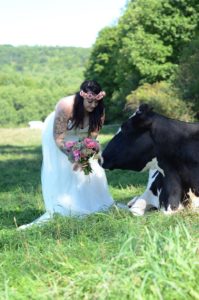 In the green, sunny meadow, Amanda Clark kneels and readies her camera. She will attempt to capture a perfect moment, if it presents itself. Thirty feet away, a female cow is turned away from Amanda, her brown and white spots catching the sun’s rays like mocha flax. As beautiful as the cow’s coat is, Amanda is waiting for the eyes. That moment of connection between her and an animal, when their eyes tell their story, and hopefully her camera can capture it and translate it. That moment when the universe connects people from two species, and they instantly know each other. When they both know that the truth is they are the same, they are here in this meadow, together, on this sun-dappled afternoon. Slowly but suddenly, the cow begins to turn, and Amanda stills herself. Breathlessly, their eyes meet, and for a moment, they know each other. Amanda Clark doesn’t miss the moment–her shudder clicks, the moment preserved.
In the green, sunny meadow, Amanda Clark kneels and readies her camera. She will attempt to capture a perfect moment, if it presents itself. Thirty feet away, a female cow is turned away from Amanda, her brown and white spots catching the sun’s rays like mocha flax. As beautiful as the cow’s coat is, Amanda is waiting for the eyes. That moment of connection between her and an animal, when their eyes tell their story, and hopefully her camera can capture it and translate it. That moment when the universe connects people from two species, and they instantly know each other. When they both know that the truth is they are the same, they are here in this meadow, together, on this sun-dappled afternoon. Slowly but suddenly, the cow begins to turn, and Amanda stills herself. Breathlessly, their eyes meet, and for a moment, they know each other. Amanda Clark doesn’t miss the moment–her shudder clicks, the moment preserved.
However, Amanda isn’t at a farm. She is at a farm sanctuary. Farm sanctuaries are places that happen to look a lot like farms, but amidst their rolling hills and red barn roofs you’ll find no machinery of torture or exploitation. Sanctuaries are bastions of hope for animals that are typically used in animal agriculture; here animals are brought to live out their lives without fear of torture, emotional abuse or a trip on a transport truck to their death. Farm sanctuaries are, in effect, places where farmed animals can live out the natural course of their lives, as happy as they can be.
Amanda Clark visits farm sanctuaries to photograph the animals there. Then she sells prints of the photos and donates the proceeds directly back to the sanctuaries she took the photos at. This is her Sanctuary Project.
“I officially started the Sanctuary Project in January of 2017,” she says. “I had photographed the animals many times on my previous visits to sanctuaries but it never clicked to start the project until the beginning of this year. I wanted to help give back to the animals. I have photographed at nine sanctuaries thus far and plan on adding many more in the near future!” The sanctuaries she’s shot at range from Maryland to New York, and the animals she’s made connections with range from chickens to goats, horses to pigs. The settings are often indistinguishable from the idyllic farm images our culture hoists on us all from birth, but behind these black-and-white photos are no dark secrets of an exploitative industry – the animals are truly loved and cared for. As such it becomes easier to see the animals for what they are: individuals who have a future, and all that comes with it. “I hope that people can see through my photographs that these animals each have individual personalities, just like people do. You can look into their eyes and know that they are feeling sentient beings like us,” Amanda says. “That is the most important thing for me to show people.”
All sanctuaries work a little different, but most are open to the public and allow tours and opportunities to meet the animals. Says Amanda of a typical photo shoot: “Upon arrival, there is usually a tour guide who will take us around to meet the animals. I love meeting each animal, hearing their stories, and trying to best capture their personalities in the photographs. I spend anywhere from one to three hours at each sanctuary, visiting with each animal.” A perusal of Amanda’s portfolio easily shows the fruit of these labors: her talent and compassion are interchangeable, feeding off each other; the animals, with knowing, nuanced expressions, speak across the species divide and draw us in. They say to us, I am here. And Amanda Clark knows just when to snap the picture to show the rest of us.
From an artistic perspective, it’s striking that the photos are all in black and white. It is immediately obvious as a deliberate choice. “By keeping my photos in black and white, I am unifying the collection. But more importantly, I find that color can be distracting, especially color in the background of a photo. I want the viewer to be focused only on the animal,” she says. And that brings up an important element: the viewer. Who exactly is the intended audience of the Sanctuary Project? “Everyone!”, she exclaims. “Most people unfortunately do not have the opportunity to spend time with farmed animals, so my main goal is to connect those people to the animals through the photographs. But at the same time, I want everyone to be able to see the animals living their lives happily and in complete freedom, so the more people I can reach, the better.”
All the sanctuaries in the Sanctuary Project are places you can visit, to some extent or another. On her blog, you can learn more about the specific mission and details of each sanctuary, as well as make purchases of prints to support the project. Amanda’s donations are sorely needed by these sanctuaries; giving farm animals a lifetime home is never an inexpensive proposition and most of them depend on donations to make the goal a reality.
Ultimately, the Sanctuary Project is about the animals; understanding them, knowing them, loving them–and passing that understanding on. In a world that is largely convinced that these thinking, loving, hoping animals are nothing more than a walking collection of meals, each photo screams out the opposite. Each animal says to the camera, I’m Someone. “Both animals and photography have always been a passion of mine,” Amanda says. “I knew I wanted to help these amazing animals any way that I could. I donate 100% of the proceeds back to the sanctuaries. I hope to one day have a sanctuary of my own, but until then, I will continue sharing the animals’ stories.”


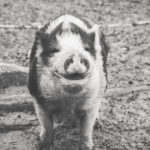
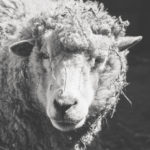
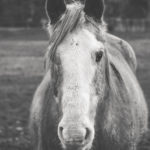
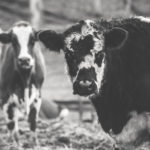

Leave a Reply